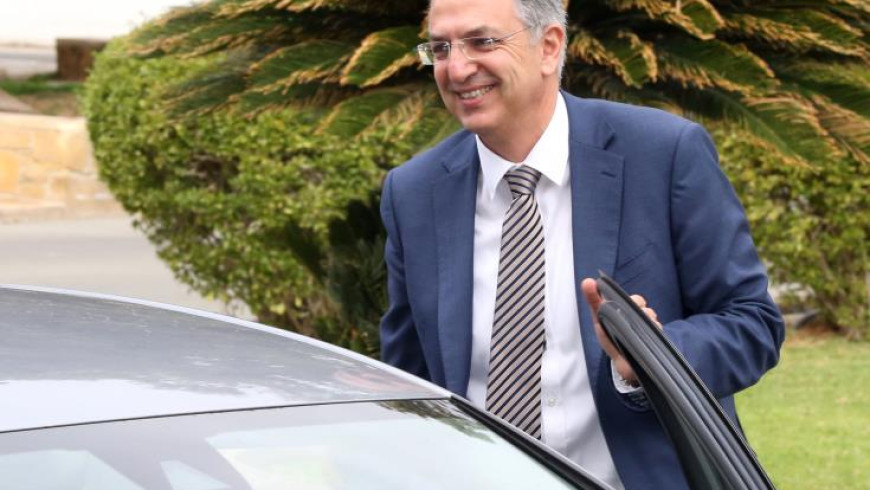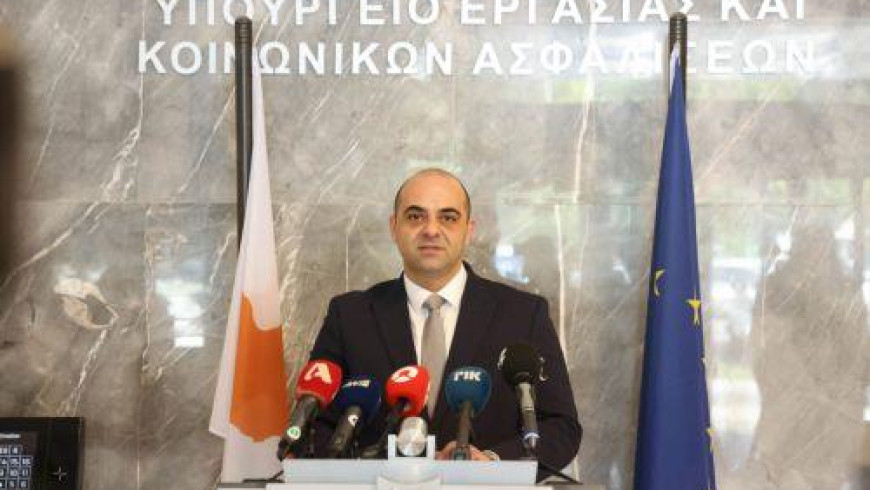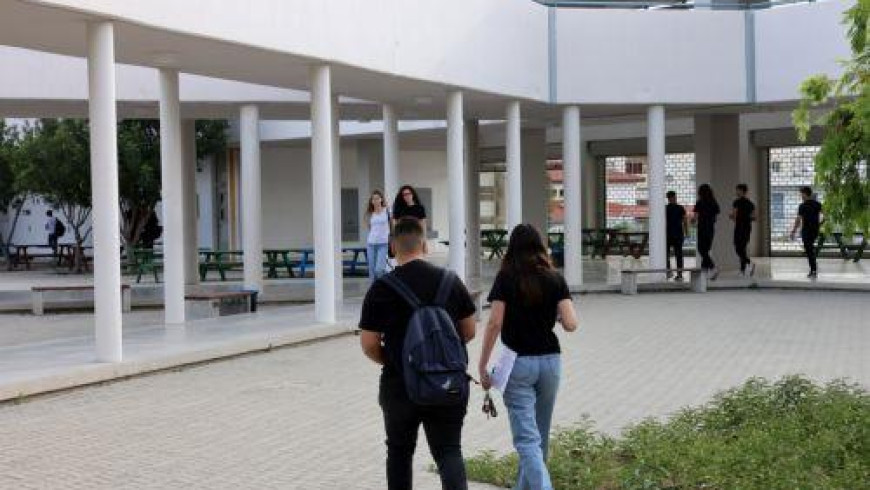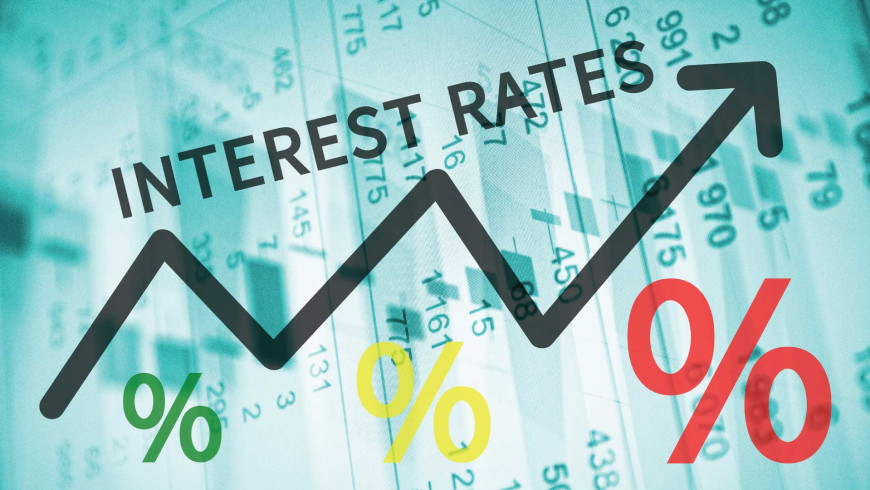Challenges of Macroeconomic Volatility in Resource-Rich Countries*

There are high hopes in Cyprus that natural gas exploration will bring new dynamism to this Island shattered economy. For the purpose of granting licenses for the exploration and exploitation of natural gas, Cyprus has defined an exploration area off its South cost and divided it into 13 blocks. The first exploration license, for “Block 12” was granted in 2008 to the US firm Noble Energy (Noble). In 2012 another five exploration licenses where granted to the Italian Eni in consortium with South Korean Kogas (Blocks 2, 3 and 9), and to the French Total (Blocks 10 and 11). To date only Noble has undertaken appraisal drillings. Its latest appraisal has revealed a gross resource stock in Block 12 ranging from 3.6 trillion cubic feet (tcf) to 6 tcf with a mean of 5 tcf. This amount has been deemed commercial by experts, but Noble’s final investment decision is still to be taken.This is an important development for Cyprus. However, recent studies show that natural resources riches do not come as a “free lunch”, and one of the “costs” that have been attributed to resource abundance is increased macroeconomic volatility. 1. Volatility in Resource-Rich Countries: Evidence Figure 1: Volatility and Natural Resources  Source: Coutinho et al. (2013)1 Europrism is currently a partner in a study aiming to uncover in a more systematic way not only some of the stylized facts regarding macroeconomic volatility in resource-rich countries, but also its links to other sources of macroeconomic volatility such as fiscal procyclicality. The study is led by Professor Alexander Michaelides (University of Cyprus and Imperial College), and is financed by the Cyprus Research Promotion Foundation (IPE), grant agreement ΑΝΘΡΩΠΙΣΤΙΚΕΣ/ΟΙΚΟΝ/0311(ΒΙΕ)/04. For this we have compiled a large database of 180 countries, including both resource-rich and resource-poor countries. The compiled data unveils interesting facts. Firstly, even using different measures of macroeconomic volatility, it does seem to be true that increased volatility is a resource-rich phenomenonmore than a developing country phenomenon per se, as was implicitly assumed by most of the recent literature. Since a figure can perhaps say more than 1000 words, Figure 1 plots the relationship between the standard deviation of GDP growth (a common measure of macroeconomic volatility), and measures of resourceintensity, namely the ratio of natural resource exports to total exports (top panel) and the ratio of natural resource revenues to GDP (bottom panel), for our setof countries. In both panels, the positive relationship is clear. Table 2 provides additional evidence. Table 1: Volatility and Natural Resources
Source: Coutinho et al. (2013)1 Europrism is currently a partner in a study aiming to uncover in a more systematic way not only some of the stylized facts regarding macroeconomic volatility in resource-rich countries, but also its links to other sources of macroeconomic volatility such as fiscal procyclicality. The study is led by Professor Alexander Michaelides (University of Cyprus and Imperial College), and is financed by the Cyprus Research Promotion Foundation (IPE), grant agreement ΑΝΘΡΩΠΙΣΤΙΚΕΣ/ΟΙΚΟΝ/0311(ΒΙΕ)/04. For this we have compiled a large database of 180 countries, including both resource-rich and resource-poor countries. The compiled data unveils interesting facts. Firstly, even using different measures of macroeconomic volatility, it does seem to be true that increased volatility is a resource-rich phenomenonmore than a developing country phenomenon per se, as was implicitly assumed by most of the recent literature. Since a figure can perhaps say more than 1000 words, Figure 1 plots the relationship between the standard deviation of GDP growth (a common measure of macroeconomic volatility), and measures of resourceintensity, namely the ratio of natural resource exports to total exports (top panel) and the ratio of natural resource revenues to GDP (bottom panel), for our setof countries. In both panels, the positive relationship is clear. Table 2 provides additional evidence. Table 1: Volatility and Natural Resources  2. Causes and Consequences of Increased Macroeconomic Volatility Empirically, macroeconomic volatility has been associated with lower economic growth.2The negative relationship between volatility and economic growth can be justified with theoretical underpinnings going back to Keynes. Volatility complicates saving and investment decisions by governments, firms, and households, and, in turn, affects long-term economic performance. Volatility increases the perceived riskiness of investment projects and thus lowers the demand for investment which in turn reduces output growth. A negative link between volatility and growth canalso occur if volatility is associated with worsening financial constraints. In this case, volatility can lead to less human capital development, lower productivity-enhancing expenditures, and consequently lower growth rates. Aversion to economic downturns can also prompt governments to adopt policies, such as labor-market restrictions, that make firms less flexible and willing to innovate, thus deepening the negative link between volatility and long-run growth. Commodity prices have historically recorded boom and bust patterns with high and varying volatility in nominal and real terms, especially when compared to the prices of manufactures.2In parallel, macroeconomic performance in commodity exporting countries tends to move with commodity price cycles. This co-movement has been more prominent for exporters of point depletable resources, such as hydrocarbons and metals, than for food and raw materials exporting countries. The differential has been attributed to energy and metals sectors typically accounting for higher shares in GDP and exports. But although the volatility of commodity prices is a reality, its pass-through to resource-rich countries macroeconomic volatility must be in great part due to structural and macroeconomic policies. A potential culprit is low financial development, which prevents countries from borrowing in bad times and saving efficiently in good times. In fact,resource-rich countries tend to overborrow in good times, when commodityprices increase, tofinance oversizedexpenditures which haveto be radically cut back in bad times, when resource prices fall.This phenomenon has been labeled the “debt-overhang” of resource-rich countries, and has been clearly the experience of oil producing countries after the oil booms of the 1970’s.3This phenomenon has been attributed at least in part to the behavior of fiscal policy and government consumption in particular. Without strict fiscal rules and powerful forecasting tools, governments in resource-rich countries are likely to deem commodity price hikes as permanent, increasing government consumption and investment accordingly, moreover they are tempted to borrow on account of the expected ever-increasing future commodity revenues. When it turns out that the windfall is only temporary and highly indebted governments see themselves cut out from external financing, painful downward adjustments to consumption and investment have to ensue, rendering fiscal policy highly procyclical. Table 2 shows how government consumption growth tends to be not only higher on average in resource-rich countries, both scaled and un-scaled by GDP, but also more volatile. Our estimates suggest, in addition, that a one percent exogenous increase in GDP growth in our resource-rich sample leads on average to a 2% in government consumption expenditure (in real terms).4 Table 2: Volatility and Fiscal Policy
2. Causes and Consequences of Increased Macroeconomic Volatility Empirically, macroeconomic volatility has been associated with lower economic growth.2The negative relationship between volatility and economic growth can be justified with theoretical underpinnings going back to Keynes. Volatility complicates saving and investment decisions by governments, firms, and households, and, in turn, affects long-term economic performance. Volatility increases the perceived riskiness of investment projects and thus lowers the demand for investment which in turn reduces output growth. A negative link between volatility and growth canalso occur if volatility is associated with worsening financial constraints. In this case, volatility can lead to less human capital development, lower productivity-enhancing expenditures, and consequently lower growth rates. Aversion to economic downturns can also prompt governments to adopt policies, such as labor-market restrictions, that make firms less flexible and willing to innovate, thus deepening the negative link between volatility and long-run growth. Commodity prices have historically recorded boom and bust patterns with high and varying volatility in nominal and real terms, especially when compared to the prices of manufactures.2In parallel, macroeconomic performance in commodity exporting countries tends to move with commodity price cycles. This co-movement has been more prominent for exporters of point depletable resources, such as hydrocarbons and metals, than for food and raw materials exporting countries. The differential has been attributed to energy and metals sectors typically accounting for higher shares in GDP and exports. But although the volatility of commodity prices is a reality, its pass-through to resource-rich countries macroeconomic volatility must be in great part due to structural and macroeconomic policies. A potential culprit is low financial development, which prevents countries from borrowing in bad times and saving efficiently in good times. In fact,resource-rich countries tend to overborrow in good times, when commodityprices increase, tofinance oversizedexpenditures which haveto be radically cut back in bad times, when resource prices fall.This phenomenon has been labeled the “debt-overhang” of resource-rich countries, and has been clearly the experience of oil producing countries after the oil booms of the 1970’s.3This phenomenon has been attributed at least in part to the behavior of fiscal policy and government consumption in particular. Without strict fiscal rules and powerful forecasting tools, governments in resource-rich countries are likely to deem commodity price hikes as permanent, increasing government consumption and investment accordingly, moreover they are tempted to borrow on account of the expected ever-increasing future commodity revenues. When it turns out that the windfall is only temporary and highly indebted governments see themselves cut out from external financing, painful downward adjustments to consumption and investment have to ensue, rendering fiscal policy highly procyclical. Table 2 shows how government consumption growth tends to be not only higher on average in resource-rich countries, both scaled and un-scaled by GDP, but also more volatile. Our estimates suggest, in addition, that a one percent exogenous increase in GDP growth in our resource-rich sample leads on average to a 2% in government consumption expenditure (in real terms).4 Table 2: Volatility and Fiscal Policy  3. Summing up and lessons for Cyprus Disciplining fiscal policy may well be the key to limiting macroeconomic volatility in resource-rich countries, and enhance their growth potential. The behavior of fiscal policy, its statistical links to macroeconomic volatility, and ways to limit fiscal procyclicality in resource-rich countries, are therefore worth investigating. If fiscal policy can be indeed an important source of macroeconomic volatility, hampering growth, it is important that resource-rich countries find ways to limit fiscal procyclicality. This is likely not only to require constraints on the use of windfall revenues, but also the adoption of high quality unbiased forecasts for budgetary planning. 1Coutinho, L., Georgiou, D., Heracleous, M., Michaelides, A., and Tsani, S. (2013), “Limiting Fiscal Procyclicality: Evidence from Resource-Rich Countries”, CEPR discussion paper 9672 (http://www.cepr.org/pubs/dps/DP9672), also available at http://papers.ssrn.com/sol3/papers.cfm?abstract_id=2321111 2 See for instance Aghion, P.; Angeletos, G.-M.; Banerjee, A. &Manova, K. (2010), 'Volatility and growth: Credit constraints and the composition of growth.', Journal of Monetary Economics 57, 246-265. 3See for instance Jacks, D. S.; O’Rourke, K. H. & Williamson, J. G. (2011), 'Commodity price volatility and world market Integration since 1700', The Review of Economics and Statistics 93(3), 800-8013., and references therein. 4Manzano, O. &Rigobon, R. (2001), 'Resource curse or debt overhang?', NBER Working Paper NO W8390 Cambridge MA. 4 This result is obtained through a panel regression analysis reported in detail in Coutinho, L., Georgiou, D., Heracleous, M., Michaelides, A., and Tsani, S. (2013), “Limiting Fiscal Procyclicality: Evidence from Resource-Rich Countries”, CEPR discussion paper 9672 (http://www.cepr.org/pubs/dps/DP9672), also available at http://papers.ssrn.com/sol3/papers.cfm?abstract_id=2321111 About the Authors Leonor Coutinho is a senior economics researcher at Europrism (Cyprus) and Special Scientist at the University of Cyprus. Ms. Coutinho holds a Ph.D. from the European University Institute (Florence). Her research interests include macroeconomics, international economics and finance in the EU and neighboring regions. She is currently engaged in the European Commission’s FP7 Project MEDPRO: Prospective Analysis for the Mediterranean Region. Her past experience includes positions with the Portuguese Science Foundation at Georgetown University (Washington D.C.), The Centre for European Policy Studies and the World Bank. Email: [email protected] Alexander Michaelides is Professor of Finance at the University of Cyprus and the Imperial College, and Director of the Center for Banking and Financial Research at the University of Cyprus. He holds a Ph.D. in Economics from Princeton University (1997) and a B.A. in Economics from Harvard (1993). His research interests are in the areas of macroeconomics and finance. He has published in top professional journals like the American Economic Review, the Journal of Econometrics, the Journal of Finance and the Review of Financial Studies. He is affiliated with CEPR (London), Netspar (The Netherlands) and the Financial Markets Group at the London School of Economics. He was previously a lecturer (2001-2006) and associate professor (2006-2010) at the Department of Economics at the London School of Economics (LSE). Email: [email protected] Stella Tsani is an associate researcher at EuroprismResearch, and at the E3M Lab, National Technical University of Athens, Greece, and a member of the Centre for Euro-Asian Studies at the University of Reading, UK. She holds a Ph.D. in Economics and Business from the University of Reading, UK. Her research interests include resource economics, with focus on oil and gas economics, and macroeconomics. In the past has worked for the Bank of Greece and for the UK Foreign Office Chevening Fellowship Program in Oil and Gas Economics. Has held teaching posts at the University of Reading, UK and at the Kainar University, Kazakhstan. Email: [email protected]
3. Summing up and lessons for Cyprus Disciplining fiscal policy may well be the key to limiting macroeconomic volatility in resource-rich countries, and enhance their growth potential. The behavior of fiscal policy, its statistical links to macroeconomic volatility, and ways to limit fiscal procyclicality in resource-rich countries, are therefore worth investigating. If fiscal policy can be indeed an important source of macroeconomic volatility, hampering growth, it is important that resource-rich countries find ways to limit fiscal procyclicality. This is likely not only to require constraints on the use of windfall revenues, but also the adoption of high quality unbiased forecasts for budgetary planning. 1Coutinho, L., Georgiou, D., Heracleous, M., Michaelides, A., and Tsani, S. (2013), “Limiting Fiscal Procyclicality: Evidence from Resource-Rich Countries”, CEPR discussion paper 9672 (http://www.cepr.org/pubs/dps/DP9672), also available at http://papers.ssrn.com/sol3/papers.cfm?abstract_id=2321111 2 See for instance Aghion, P.; Angeletos, G.-M.; Banerjee, A. &Manova, K. (2010), 'Volatility and growth: Credit constraints and the composition of growth.', Journal of Monetary Economics 57, 246-265. 3See for instance Jacks, D. S.; O’Rourke, K. H. & Williamson, J. G. (2011), 'Commodity price volatility and world market Integration since 1700', The Review of Economics and Statistics 93(3), 800-8013., and references therein. 4Manzano, O. &Rigobon, R. (2001), 'Resource curse or debt overhang?', NBER Working Paper NO W8390 Cambridge MA. 4 This result is obtained through a panel regression analysis reported in detail in Coutinho, L., Georgiou, D., Heracleous, M., Michaelides, A., and Tsani, S. (2013), “Limiting Fiscal Procyclicality: Evidence from Resource-Rich Countries”, CEPR discussion paper 9672 (http://www.cepr.org/pubs/dps/DP9672), also available at http://papers.ssrn.com/sol3/papers.cfm?abstract_id=2321111 About the Authors Leonor Coutinho is a senior economics researcher at Europrism (Cyprus) and Special Scientist at the University of Cyprus. Ms. Coutinho holds a Ph.D. from the European University Institute (Florence). Her research interests include macroeconomics, international economics and finance in the EU and neighboring regions. She is currently engaged in the European Commission’s FP7 Project MEDPRO: Prospective Analysis for the Mediterranean Region. Her past experience includes positions with the Portuguese Science Foundation at Georgetown University (Washington D.C.), The Centre for European Policy Studies and the World Bank. Email: [email protected] Alexander Michaelides is Professor of Finance at the University of Cyprus and the Imperial College, and Director of the Center for Banking and Financial Research at the University of Cyprus. He holds a Ph.D. in Economics from Princeton University (1997) and a B.A. in Economics from Harvard (1993). His research interests are in the areas of macroeconomics and finance. He has published in top professional journals like the American Economic Review, the Journal of Econometrics, the Journal of Finance and the Review of Financial Studies. He is affiliated with CEPR (London), Netspar (The Netherlands) and the Financial Markets Group at the London School of Economics. He was previously a lecturer (2001-2006) and associate professor (2006-2010) at the Department of Economics at the London School of Economics (LSE). Email: [email protected] Stella Tsani is an associate researcher at EuroprismResearch, and at the E3M Lab, National Technical University of Athens, Greece, and a member of the Centre for Euro-Asian Studies at the University of Reading, UK. She holds a Ph.D. in Economics and Business from the University of Reading, UK. Her research interests include resource economics, with focus on oil and gas economics, and macroeconomics. In the past has worked for the Bank of Greece and for the UK Foreign Office Chevening Fellowship Program in Oil and Gas Economics. Has held teaching posts at the University of Reading, UK and at the Kainar University, Kazakhstan. Email: [email protected]






 3384.21
3384.21 0
0